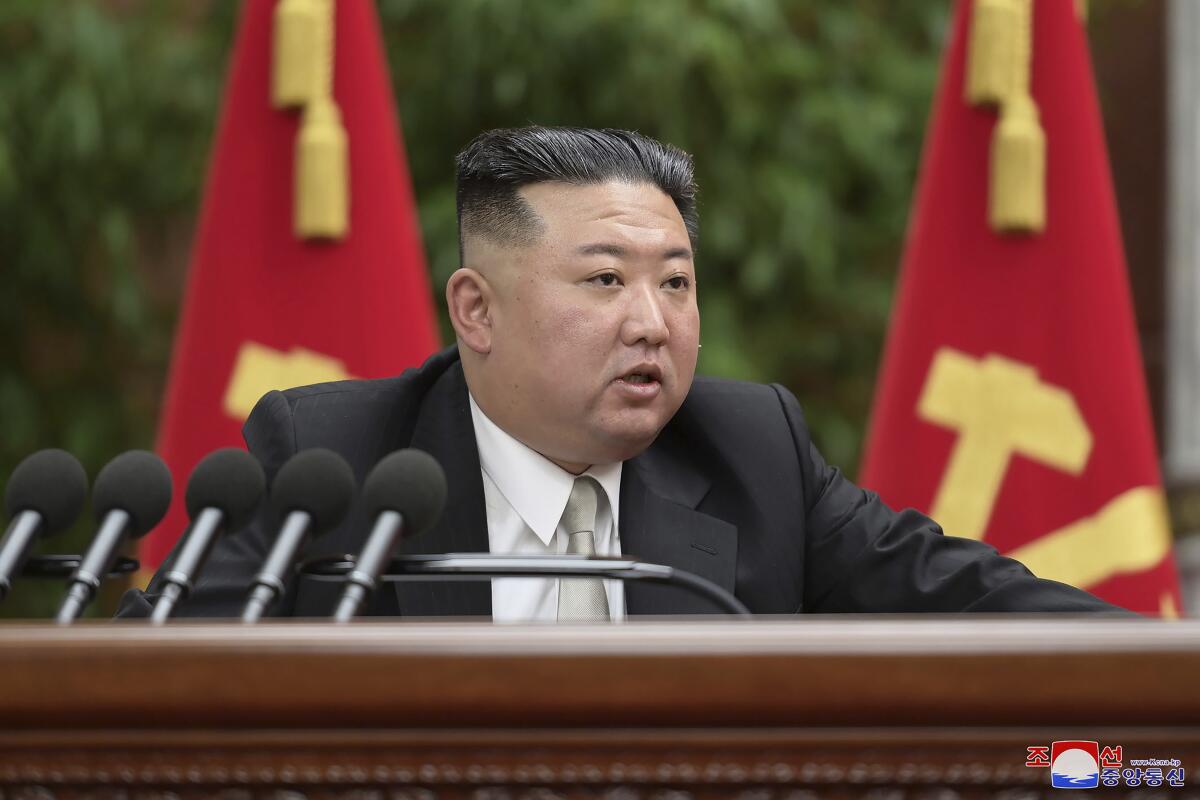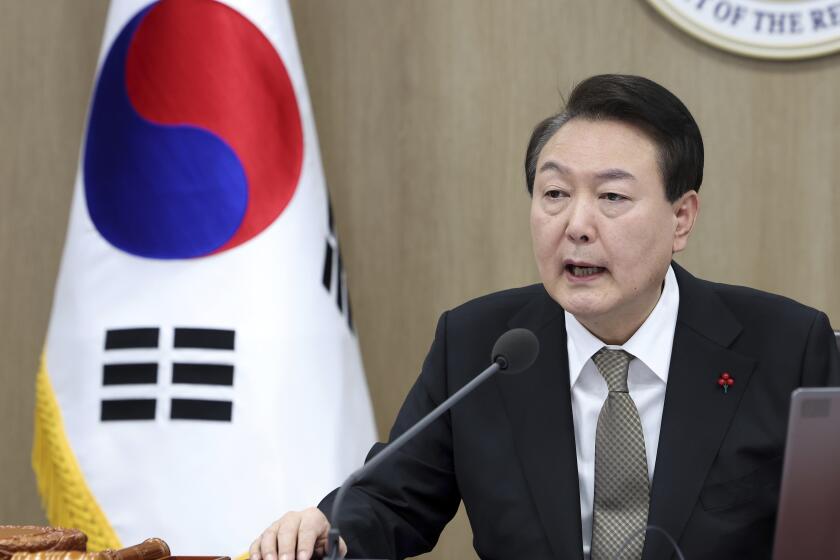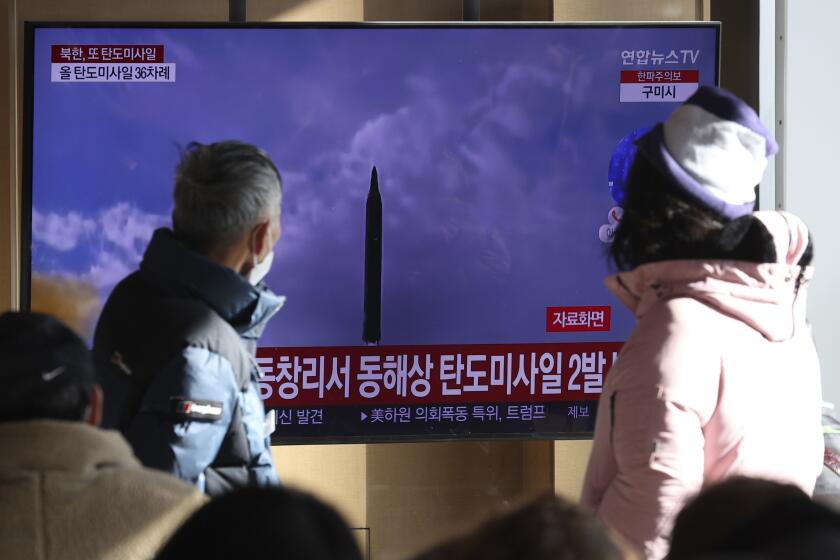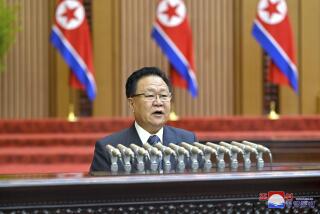North Korea’s Kim Jong Un lays out key goals to boost military power

SEOUL — North Korean leader Kim Jong Un presented new plans to further bolster his military power next year at a meeting of top political officials, state media reported Wednesday, in an indication he’ll continue his provocative run of weapons displays.
Kim’s statement came as animosities with rival South Korea rose sharply this week, with the South accusing the North of flying drones across the border for the first time in five years. This year, North Korea already performed a record number of missile tests in what experts call an attempt to modernize its arsenal and increase its leverage in future dealings with the United States.
During the Tuesday session at the ongoing plenary meeting of the ruling Workers’ Party, Kim analyzed new security challenges in international politics and on the Korean Peninsula and clarified principles and directions to take in external relations and fights against enemies to protect national interests and sovereignty, according to the official Korean Central News Agency.
Kim “set forth new key goals for bolstering the self-reliant defense capability to be pushed ahead in 2023 under the multilaterally changing situation,” KCNA said, without elaborating.
Some observers say the new goals could be related to Kim’s drive to expand his nuclear arsenal and acquire high-tech weapons systems such as multi-warhead missiles, a more agile long-range weapon, a spy satellite and advanced drones. They say Kim would eventually aim to use his boosted nuclear power to force his rivals to accept the North as a legitimate nuclear state, a status he thinks is essential in getting international sanctions lifted.
On Monday, South Korea’s military fired warning shots and launched fighter jets and helicopters, after detecting what it called five North Korean drones that violated the South’s airspace. South Korea also flew three drones across the border in response, Defense Minister Lee Jong-Sup told lawmakers Wednesday.
South Korea’s military failed to bring down any of the North Korean drones that crossed the border recently, raising serious air defense questions.
The military apologized for failing to shoot down the drones, and President Yoon Suk-yeol called for stronger air defenses and high-tech stealth drones to better monitor North Korea.
In a meeting with his advisors Wednesday, Yoon said South Korea must resolutely retaliate against any provocation by North Korea, saying that will be the most powerful means to deter the North. Yoon also said South Korea must not be intimidated by North Korea’s nuclear weapons, according to his spokesperson, Kim Eun-hye.
Some experts say the North Korean drone flights might have been designed to test South Korean and U.S. readiness and nullify a previous inter-Korean agreement to reduce tensions at front-line areas. They say North Korea likely assessed its drones as a cheap yet effective method to cause security jitters and a domestic divide in South Korea.
Yoon, a conservative who took office in May, said Tuesday that South Korea has had little anti-drone training since 2017, a year when his liberal predecessor Moon Jae-in was inaugurated. In an apparent effort to blame the allegedly lax air defenses on Moon’s engagement policy toward North Korea, Yoon said, “I think our people must have seen well how dangerous a policy relying on the North’s good faith and [peace] agreements would be.”
North Korea fires nuclear-capable ballistic missiles with a range of striking Japan in a possible protest of Tokyo’s adoption of a security strategy.
Moon’s liberal opposition Democratic Party accused the president of trying to shift blame.
Under a five-year arms buildup plan announced Wednesday, South Korea’s Defense Ministry said it’ll push to bolster its so-called three-axis system — preemptive strike, missile defense and retaliatory attack capabilities — to cope with North Korean nuclear threats. To do so, it said it’ll procure more stealth fighter jets and submarines capable of firing ballistic missiles, operate additional interceptor missiles and radars, and develop more powerful, precision-guided weapons.
It said South Korea will also procure diverse types of drones to strengthen its surveillance capacities.
More to Read
Sign up for Essential California
The most important California stories and recommendations in your inbox every morning.
You may occasionally receive promotional content from the Los Angeles Times.












